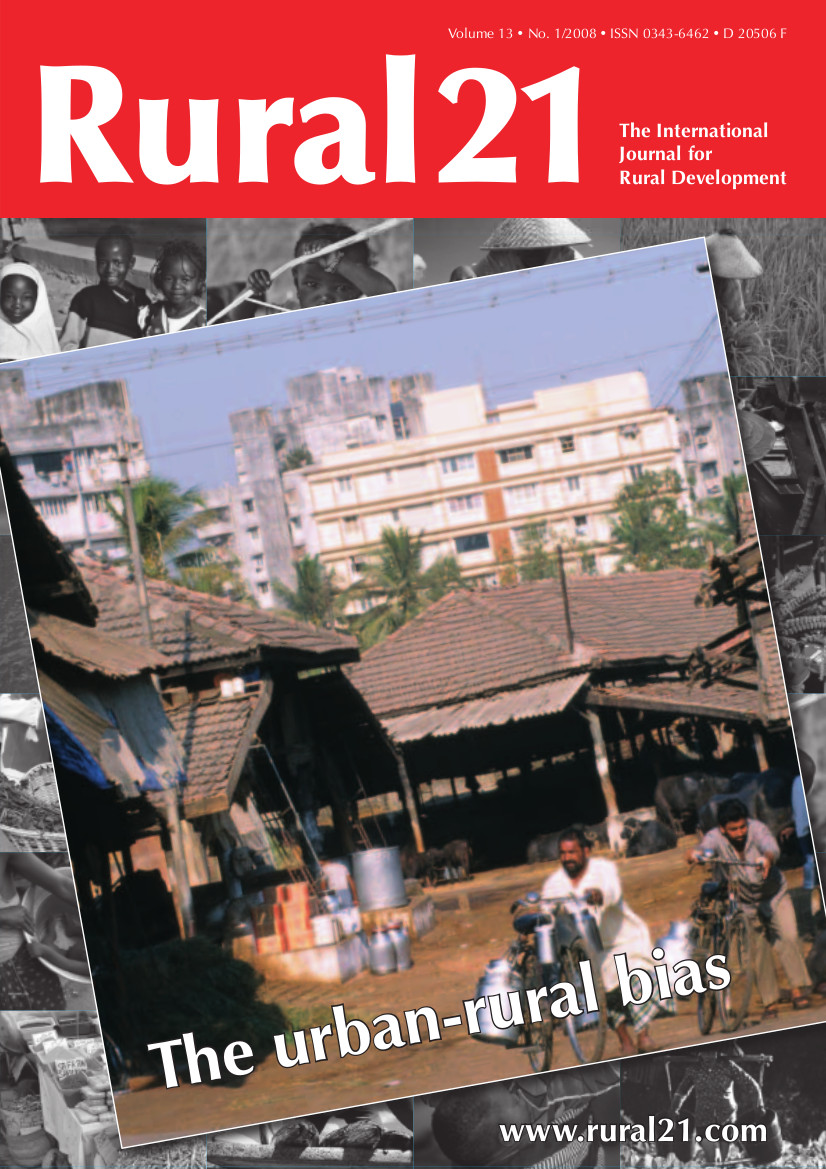NRC: The Importance of Addressing Housing, Land and Property (HLP)
A new report by the Norwegian Refugee Council (NRC) and the International Federation of Red Cross and Red Crescent Societies (IFRC) outlines eight reasons why it is important to address HLP issues from the outset of a humanitarian response, including:
Saving lives, preventing further displacement and human rights violations
Adapting humanitarian response to complex urban environments
Ensuring equal access to humanitarian assistance
Promoting access to justice in crises contexts and contributing towards durable solutions
Redimensionando la población rural
Perú: Redimensionando la población rural
Fernando Eguren*
1 de diciembre de 2008
La ciudad intermedia neoliberal y sus desafíos políticos pos-terremoto
Los authores del documento intentan reflexionar sobre la importancia de la ciudad intermedia en el Chile de hoy, las tensiones que vive en el contexto de treinta años de transformaciones neoliberales en el país, y los efectos del reciente terremoto del 27 de febrero. Indaga en la relación entre ciudad y política, y en la capacidad actual de esta última para construir proyectos alternativos de desarrollo.
Animal husbandry in cities – using potentials, reducing risks
Not only rabbits and guinea-pigs but sheep, goats, cattle and pigs also play a crucial role in the food and income situation of countless city-dwellers world-wide. However, when people and animals live in such close proximity, health risks are inevitable. But instead of banning urban animal husbandry, as was, for example, considered in the course of the swine influenza epidemic, framework conditions ought to be created that enable people to make use of this business branch to earn a profit without running risks.
Rural development in an urbanising world
Rural development and urbanisation are often seen as competing, but in most cases are intimately linked. It is essential that policies re? ect and support the many positive links between rural and urban areas, enterprises and people. This in turn requires a better understanding of urbanisation processes and the role of small towns.
Rural migrant workers in China
In today’s China, about 220 million rural migrant workers are on the move – this is more than two thirds of the US population – and their number is set to increase in the course of the country’s urbanisation process. At a rate of 47 percent, still below global average, and against the backdrop of a marked rural-urban divide, urbanisation is not only an effect of rapid economic development, but also forms part of the Chinese government’s economic development strategy.
Mitigating rural-urban disparities in China and India
The early development strategies of both China and India were urban- and industry-focused, discounting the importance of rural development. Despite sweeping reforms in both countries, the urban bias and subsequent spatial disparities still exist today. In order to reduce poverty and increase growth, developing countries need to correct these spatial disparities through a set of policies that take advantage of the synergies and linkages between rural and urban areas.
Urban agriculture - a key to food security
Dar es Salaam is one of the fastest growing cities in sub-Saharan Africa. In its rapidly expanding peri-urban fringe poor migrants from distant rural areas settle down on plots they can afford that provide access to urban markets. They engage in commercial poultry farming establishing sustainable livelihoods and improving food security in the city.
Mobile telecommunications: bridging the urban/rural divide
The spread of mobile telecommunications in Africa is opening up new horizons in business and politics. More than 10 percent of the African population now has a mobile phone. In areas without roads where contact was formerly difficult, the mobile phone is sweeping aside communication problems. New business links are now possible; a new era is dawning in Africa.
Voices of the Poor: Access to Urban Land
In 2007 Urban LandMark undertook a series of consultations as part of the Voices of the Poor project. Four workshops were held in the centres listed above. The workshops were attended mostly by civil society organisations as well as NGOs. In all, 105 participants from more than 30 different civil society organisations participated. This case study presents the perspectives and experiences of civil society organisations with regard to access to urban land by the poor as derived from the consultations. These perspectives are fairly representative of urban community organisations as a whole.
Trading Places: Accessing Land in African Cities
Trading Places is about urban land markets in African cities. It explores how local practice, land governance and markets interact to shape the ways that people at society's margins access land to build their livelihoods.
The authors argue that the problem is not with markets per se, but in the unequal ways in which market access is structured. They make the case for more equal access to urban land markets, not only for ethical reasons, but because it makes economic sense for growing cities and towns.








